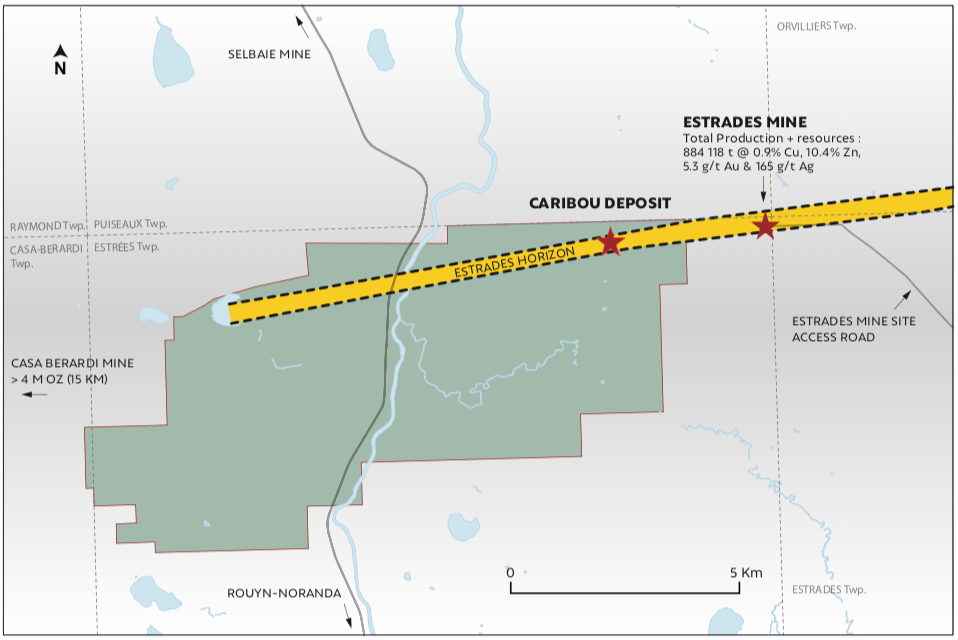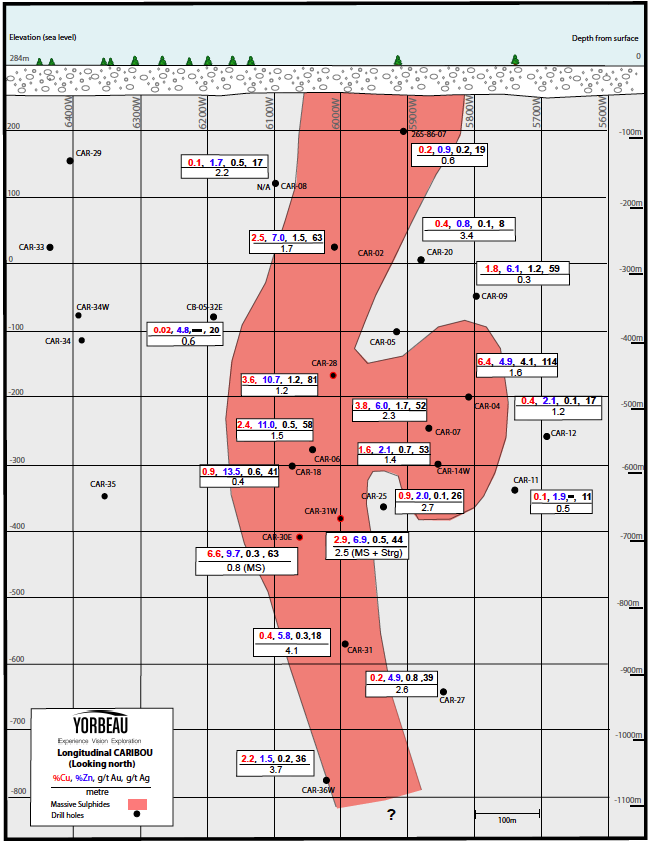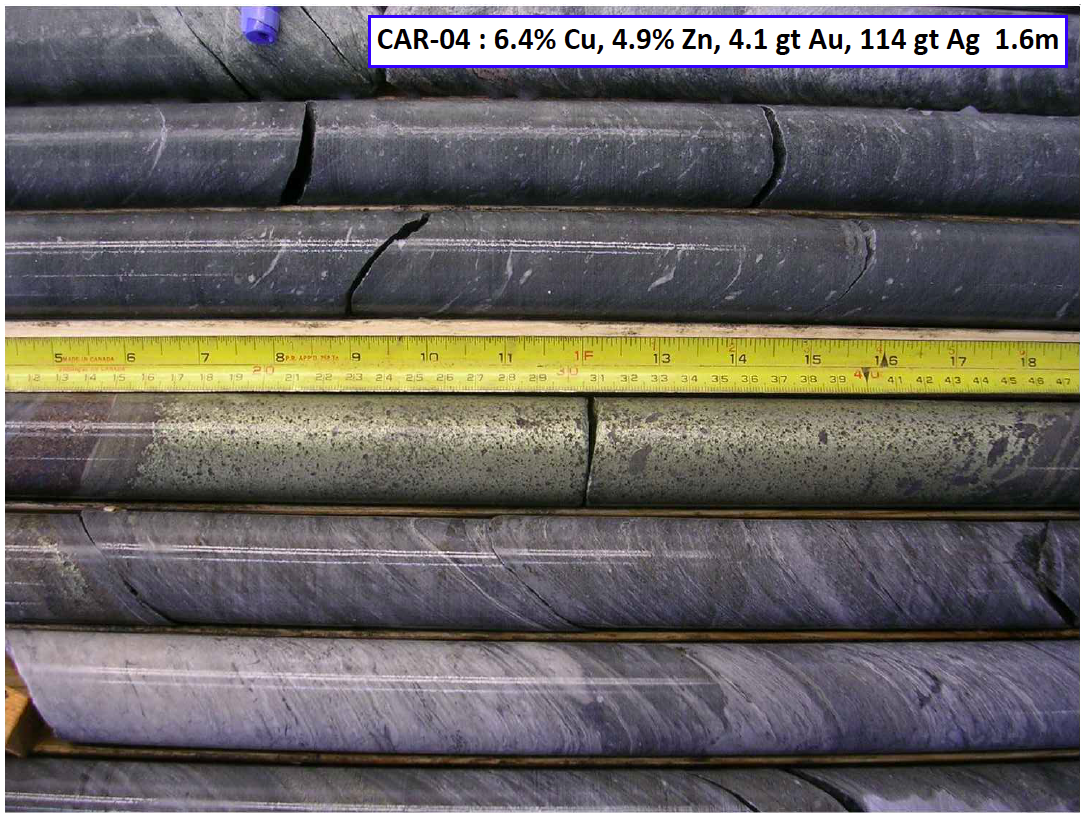Caribou
The Estrades-Caribou project is located in Northwestern Quebec approximately 95km NE of the town of La Sarre and is easily accessible via public roads and a forestry road that provides access to the former Estrades mine.
The project comprises two distinct claim blocks that are contiguous: the Estrades Claims owned as a JV with Inmet and the Caribou claim block owned 100% by Yorbeau but subject to an agreement with IAMGOLD whereby IMG retains a royalty interest. In addition, the portion of the Caribou Block that is located within 2 km from the Estrades Claims is also subject to a JV with Inmet (now First Quantum).
First Quantum’s interest in the Estrades project and the East portion of Caribou is now reduced to 35% as a result of Inmet not participating in any program so far. First Quantum will continue to incur further dilution as Yorbeau keeps funding exploration on its own.
The Caribou project is located along the western extension of the Estrades mine and exploration work carried by Cogitore led to the discovery of a new massive sulphide deposit in February 2009. This massive sulphide discovery at Caribou is located 3.4 kilometres to the west of the Estrades deposit but along the same stratigraphic horizon.
Ten holes have intersected a thin but high grade massive sulphide lens (sheet) and the weighted average of the ten holes drilled to date is 2.8% Cu, 6.9% Zn, 1.1 g/t Au et 53 g/t Ag over a core length of 1.8 metres. Although the thicknesses encountered so far have been relatively thin in any mine production scenario, the grades remain very high and speak for a mineralized system of high quality. At today’s metal prices the NSR value of this material would be worth nearly $400 per tonne!
The Caribou deposit is a high grade massive sulphide sheet that has now been drilled at relatively wide spacing to a vertical depth of about 700 metres. Massive sulphide mineralization is accompanied by chlorite and sericite alteration in the footwall felsic rocks, and the geological environment is similar to the Estrades environment except that the copper grades so far have been significantly higher than those observed at Estrades. The bedded “exhalitive” tuffs hosting the Caribou massive sulphides are quite similar visually and chemically to the “Key Tuffite” marker in the Matagami camp.
Because of the high grades in base and precious metals encountered to date, and considering the nature of massive sulphide deposits which typically vary in thickness as a function of structure or proximity to exhalitive vents, it is proposed to continue testing the extension of the Caribou deposit at greater depths. In that respect, it is interesting to note that the type of targets sought at Caribou are truly 3-dimensional and that they don’t need to extend all the way to surface. For example, Agnico Eagle’s world class La Ronde mine, which is a volcanogenic massive sulphide deposit in the south part of the Abitibi Belt, only begins at about 800 metres vertical. Future work will be focused on the delineation of the Caribou deposit to the east and at depth, and on the exploration for additional massive sulphide lenses to the west. Data compilation suggests that the Estrades mine horizon extends at least for another 3 kilometres to the west, where interesting MegaTEM anomalies remain untested.
Finally, the project being located on strike with a major gold deposit (Casa Berardi mine: > 4 Million ounces of gold), the gold potential needs to be evaluated. In particular, gold intersections located in the east part of the Caribou property, grading respectively 11.5 g/t Au over 1.5 metres and 7.4 g/t Au over 1.4 metres, need to be followed up.


